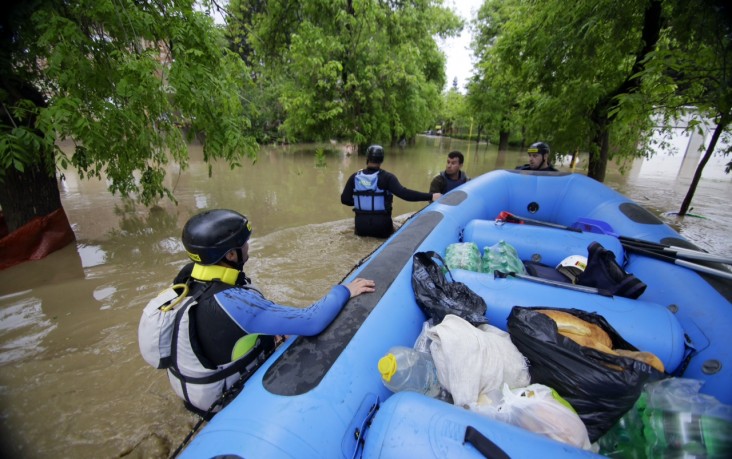
Aug. 2014—Purportedly, one can tell a lot about people by the way they talk about their deeds, if they are reluctant to put themselves in the spotlight. Such are the brave rafters from the Kanjon Rafting Club of Banja Luka, who were among the first to put their lives and skills in service to rescue victims of the devastating floods in Bosnia and Herzegovina (BiH) in May 2014.
“Neither we nor any other rafting or diving club or any trained person are true heroes; we live on the water,” said Aleksandar Pastir, president of the Rafting Association of BiH and a co-owner of the Kanjon Rafting Club. “True heroes are the common people who, without any prior experience, wearing only sneakers and jeans, worked three or four days with us under extremely difficult circumstances, putting their lives at risk many times in the course of a day,” he said.
Most of the rafters managing the rescue operations were experienced skippers from the first group of rafters certified under international standards through a USAID-supported program in 2007.
But Pastir is being modest. With roads and bridges washed out, they had no information about the situation on the ground in Doboj. So they packed up what little undamaged equipment they had left—27 boats, 30 paddles and 60 rainsuits—and headed into the unknown.
Approaching Doboj, they began to realize how grave the situation was. Entire villages were under water, which in some places had already covered the entire first floors of the buildings. Pastir estimated that the water was four meters deep at that point and surging constantly.
“I have a lot of experience with water, but I have never seen water surging so fast,” said Pastir. “It is impossible to protect oneself against that. Imagine a situation in which one guy is running a rubber boat filled with people and equipment as meter-high waves cast off a newsstand, a car, and at one point, a petrol station kiosk as if they are children’s toys.”
The danger was high even for rafters trained and engaged in extreme water sports. It is one thing to navigate a river or a lake, and a completely different one to navigate through a city center flooded by a wild overflowing river.
Kanjon rafters spent three days in Doboj without a moment’s rest, evacuating hundreds of people and delivering lifesaving food, water and medicine, preventing a higher number of tragic deaths. On the second night, around midnight, they received information about an old woman who needed insulin urgently.
“In such moments, you leave everything behind, without thinking about your own safety, and give your best, regardless of the possible consequences,” Pastir said.
Kanjon Rafting is not the only example of rafting clubs springing to action to help citizens in need. Rafters from Bihac and Kljuc also helped people in Doboj; rafters from Konjic went to Maglaj and Samac; rafters from Foca went to Bijeljina. And no one even thought about the long-standing ethnic differences that have divided the people of BiH for so long.
All of these rafting clubs are beneficiaries of the Fostering Interventions for Rapid Market Advancement (FIRMA) project, jointly funded by USAID and the Swedish International Development Cooperation Agency, which has provided them training, certification and other assistance since 2009.
This story is based on an article by Nikola Vidackovic, published in the May 24, 2014, issue of Nezavisne Novine.
LINKS







Comment
Make a general inquiry or suggest an improvement.